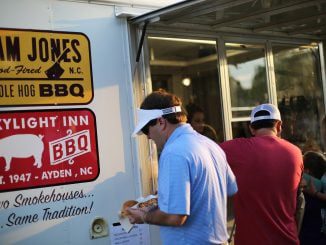Gov. William Tryon issued this order on May 16, 1771. He was frustrated with his reluctant North Carolina militia, most from the eastern part of the state, who had ignored his first command to fire on Piedmont farmers. Obeying Tryon’s command meant that North Carolinians would be fighting fellow North Carolinians. Some of the militia even sympathized with the farmers’ political concerns. After the second command, however, the militia reluctantly fired. The Battle of Alamance commenced.
Approximately, 2,000 Piedmont farmers — also known as Regulators — had gathered on a field near Alamance. For the previous three years, many in the backcountry — today the Piedmont — voiced an increasingly louder dissent. They had denounced excessive legal fees and North Carolina royal government meddling in private affairs. They had criticized the cronyism and political corruption between the royal governor and a few sheriffs.
The construction of Tryon Palace was the tipping point. Most Piedmont farmers lived in small log cabins — one room, with a loft — while an ostentatious governor’s palace by colonial 1770s standards was being built. At the taxpayer’s expense, construction costs exceeded twice as much as original estimates. To the farmers, the palace symbolized all that was wrong with the North Carolina royal government. As a result, many refused to pay their taxes.
The colonial capital — New Bern — was a great distance from the backcountry, and more counties, and therefore the number of legislators, were in the east. Regulators disliked being underrepresented or ignored. (Imagine walking or riding a horse today from Randolph County to New Bern.)
No doubt Herman Husband’s writings — “Shew yourselves to be Freemen!” — cultivated Piedmont grumblings into a growing force of political action. No doubt backcountry poetry and songs, describing “civil robberies” and officials using public office for private gain, also fostered backcountry discontentment.
Approximately 1,400 militia met the Regulators on the field near Alamance. To the royal governor and his political allies, Regulators were lawbreakers. Their actions foreshadowed a state of anarchy.
The Regulators had refused to pay taxes. They had burned a judge’s house and stable. They had disrupted official court proceedings, kicked out the ruling judge and established a mock court. They had dragged attorneys out of courtrooms and publicly humiliated or beat them.
“Thump! Thump! Thump!” banged Sheriff Edmund Fanning’s head on each front step as the Regulators dragged him out of the Hillsborough courthouse and then publicly whipped him. Afterward, they essentially destroyed the sheriff’s house.
To Tryon, law and order must prevail. So, the militia arrived in the backcountry to ensure just that.
The Battle of Alamance might have been avoided. While the two opposing forces faced each other, Regulators wanted to negotiate. Many Regulators did not anticipate a battle: some could be seen wrestling during the negotiation attempts, and others later recalled that they brought only enough ammunition to last for a day’s hunting trip. Others only wielded pitchforks or clubs.
Tryon, however, refused to negotiate with armed protestors. Later that morning, the Johnston Riot Act was read — yes, back then, sometimes people were actually “read the riot act.” Essentially, Tryon ordered the Regulators to disperse. They had an hour to do so. Minus a key Regulator leader, the pacifist Herman Husband, the Regulators remained.
At noon, the battle began. The well-led militia used cannons and traditional field tactics. The Regulators, though, hid behind trees and rocks and fired weapons. Lacking a central commander, they fought as individuals or in small groups. The tide changed when Tryon’s men set the woods ablaze. The ensconced farmers had to flee. Some were captured.
In all, 29 died — 20 Regulators and nine militia; 150 were wounded. Tryon, though, wanted to be sure Regulators had received the message. Shortly afterward, six captured Regulators were hanged. On May 16, 1771, the Regulator Rebellion ended.



